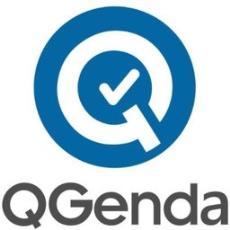

QGenda Information for Patient Access Collaborative Industry Partners Showcase
1. PAC Member Organization we are partnering with: Children’s Nebraska
2. Product Information:
a. Product Overview:
QGenda Capacity is a purpose-built solution for standardizing and centralizing exam room management to increase room utilization. By connecting exam room assignments with real-time provider schedules and patient appointment information from the EHR, the solution provides up-to-date visibility into accurate room usage and upcoming availability and identifies opportunities to reallocate space proactively, empowering data-driven changes to improve utilization, increase throughput, and drive revenue.
b. Value Product Provides to Access Leaders:
QGenda Capacity gives Access Leaders centralized, up-to-date visibility into exam room utilization so that they can make strategic adjustments to optimize resources, maximize clinical capacity, and improve patient access.
The solution includes advanced analytics and data-visualization dashboards that provide insight into historical and seasonal trends, pinpoint opportunities to schedule new clinical sessions, and proactively ensure space is optimally allocated to drive utilization improvements and patient access.
With QGenda Capacity, Access Leaders can:
■ Improve exam room utilization
■ Increase patient volume and throughput
■ Control real estate expenses
■ Strategically plan growth initiatives
■ Boost operational efficiency
■ Gain real-time data visibility
c. Example of Product’s Impact on Access:
Example 1: Sample Data on Automatic Release of Pre-Assigned Rooms when Provider Schedules Change (see next page)



Notes:
● When provider schedules are disconnected from room schedules, organizations often see a lot of rooms sitting completely empty when provider schedules change due to PTO, conferences, post call off days, and more.
● When you look at a static room schedule, these rooms may appear to be assigned, when in reality, they’re not being used at that time.
● A dynamic room schedule – like we manage in QGenda – can reveal that additional room availability.
● On average, we’ve seen that around 7-14% of rooms are released automatically in QGenda for other providers to use when the original assignee’s schedule changes, creating – in many cases – over 100 additional available exam rooms each day for large organizations.





Example 2:
Example 3:

3. Session Title: A Close-up on Exam Rooms: How Children’s Nebraska Is Using QGenda to Improve Clinic Utilization and Patient Access
4. Session Description:
Exam rooms are the front door to the health system and patient care. However, effective exam room management is challenging – if not impossible – when using manual, disparate systems to try to piece siloed data together. In order to optimize clinical space and improve patient access, health systems need meaningful, accurate visibility into exam room utilization in the context of both real-time provider schedules and up-to-date patient appointments.
In this session, we’ll explore how ambulatory leaders at Children’s Nebraska are using QGenda Capacity to achieve this visibility, analyze trends, and highlight opportunities to increase utilization, improving patient access and revenue.
5. Speaker Bios:
● Chad Lofdahl
Director, Product Strategy QGenda
As a Senior Director of Product Strategy at QGenda, Chad Lofdahl is responsible for setting the product roadmap and strategic vision for tools that enable outpatient clinics and ambulatory organizations to use their exam room space more efficiently. Chad has spent the last nine years in healthcare and real estate tech and has a Bachelor’s degree from Georgia Tech.
● Amy Oden
Manager, Capacity Management in Specialty Clinics
Children’s Nebraska
Amy Oden is the Manager of Capacity Management in the Specialty Clinics at Children’s Nebraska. Amy’s leadership work has encompassed patient access optimization, metric transparency, EPIC optimization, and project planning, including implementation. Her expertise consists of organization-wide project management, efficiency work, and systems improvement oversight. Amy’s 15 years in healthcare began as a Certified Medical Assistant on the front lines of clinical care, expanding her expertise to administration and overseeing a team paving the way for healthcare optimization. Amy holds an MBA from Bellevue University and Certified in Ambulatory Capacity Management through Patient Access Collaborative.


6. QGenda Website: www.qgenda.com or https://www.qgenda.com/clinic-exam-roomcapacity/
7. Sample Resources:
a. We have one potential addition to the assets already listed under QGenda on the PAC Industry Partner section of the website:
■ Case Study | Ophthalmic Consultants of Boston While this case study does not involve a health system, it provides a tangible ROI and compelling story. OCB was able to recoup over $750,000 per year using QGenda Capacity to discover which of their clinic locations were significantly underutilized and make adjustments. We are sharing this case study in case you find it valuable to add for the PAC health system audience.
8. Potential Blogs:
a. We have a few blogs we’d like to share with you in case you’d like to include them on your website. None of them are educational in regards to research or data, but we thought we’d provide anyway in case they meet the threshold for thought leadership you’re looking for. If not, all is well, and we will update you in the future as we develop new content.
■ Blog | Three Reasons to Move away from Static Templates for Clinician Exam Room Assignments
■ Blog | Five Reasons to Standardize and Centralize Exam Room Management across Your Health System

